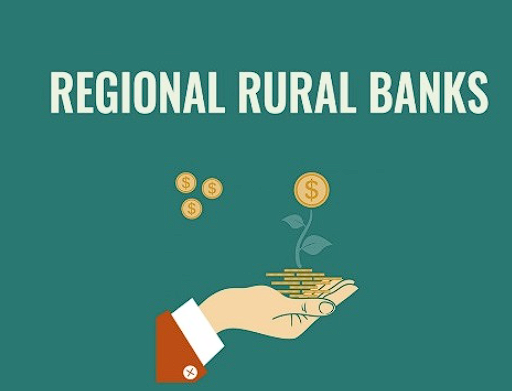Amalgamation of RRBs in India
The Government of India has announced the amalgamation of several Regional Rural Banks (RRBs), effective from May 1, 2025. This move aims to enhance the efficiency of RRBs and reduce competition among public sector banks. The initiative is part of the One State, One RRB policy introduced by the finance ministry in September 2024.
Purpose of Amalgamation
The primary objective of this amalgamation is to create larger and more robust regional institutions. This will streamline operations and enhance the financial strength of RRBs. By merging smaller banks, the government intends to ensure that these institutions can better serve rural communities.
State-wise Breakdown of Merger
- Andhra Pradesh: Chaitanya Godavari Grameena Bank, Andhra Pragathi Grameena Bank, Saptagiri Grameena Bank, and Andhra Pradesh Grameena Vikas Bank will merge.
- Bihar: Dakshin Bihar Gramin Bank and Uttar Bihar Gramin Bank will become Bihar Gramin Bank.
- Gujarat: Baroda Gujarat Gramin Bank and Saurashtra Gramin Bank will form Gujarat Gramin Bank.
- Jammu & Kashmir: J&K Grameen Bank and Ellaquai Dehati Bank will merge into Jammu and Kashmir Grameen Bank.
- Karnataka: Karnataka Vikas Grameena Bank and Karnataka Gramin Bank will combine to form Karnataka Grameena Bank.
- Madhya Pradesh: Madhya Pradesh Gramin Bank and Madhyanchal Gramin Bank will merge.
- Maharashtra: Maharashtra Gramin Bank and Vidarbha Konkan Gramin Bank will become Maharashtra Gramin Bank.
- Odisha: Odisha Gramya Bank and Utkal Grameen Bank will merge into Odisha Grameen Bank.
- Rajasthan: Rajasthan Marudhara Gramin Bank and Baroda Rajasthan Kshetriya Gramin Bank will combine to form Rajasthan Gramin Bank.
- Uttar Pradesh: Baroda UP Bank, Aryavart Bank, and Prathama UP Gramin Bank will merge into Uttar Pradesh Gramin Bank.
- West Bengal: Bangiya Gramin Vikash Bank, Paschim Banga Gramin Bank, and Uttarbanga Kshetriya Gramin Bank will become West Bengal Gramin Bank.
Financial Performance of RRBs
The RRBs have reported their highest-ever consolidated net profit of Rs 7,571 crore for FY24. Their gross non-performing assets (GNPA) ratio stands at 6.1 per cent, marking the lowest rate in a decade. This financial performance marks the potential benefits of the upcoming amalgamation.
Role of Sponsoring Banks
Each new RRB will be sponsored by a major public sector bank. This sponsorship is expected to ensure greater financial stability and operational efficiency. The largest sponsor is the State Bank of India, followed by Punjab National Bank and Canara Bank.
Key Facts About RRBs
- RRBs are were established in 1975 under an ordinance based on the recommendations of the Narasimham Committee on Rural Credit.
- This led to the Regional Rural Banks Act in 1976.
- RRBs are Scheduled Commercial Banks that work in specific regions within Indian states.
- The first RRB was Prathama Grameen Bank, set up on 2nd October 1975.
- Syndicate Bank was the first sponsor bank for an RRB.
- RRBs have three-way ownership:
- 50% – Central Government
- 35% – Sponsor Banks (Scheduled Commercial Banks)
- 15% – State Governments
Functions of RRBs:
- Offer banking services in rural and semi-urban areas.
- Help the government in:
- Paying wages under MGNREGA
- Distributing pensions
- Provide para-banking services like:
- Lockers, Debit/Credit cards
- Mobile banking, Internet banking, UPI
Month: Current Affairs - April, 2025
Category: Economy & Banking Current Affairs








